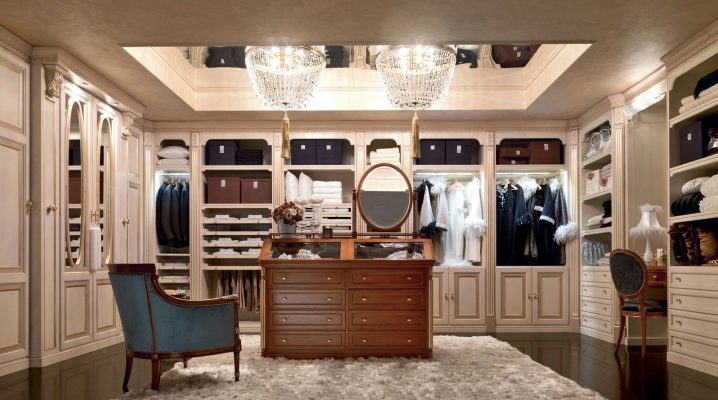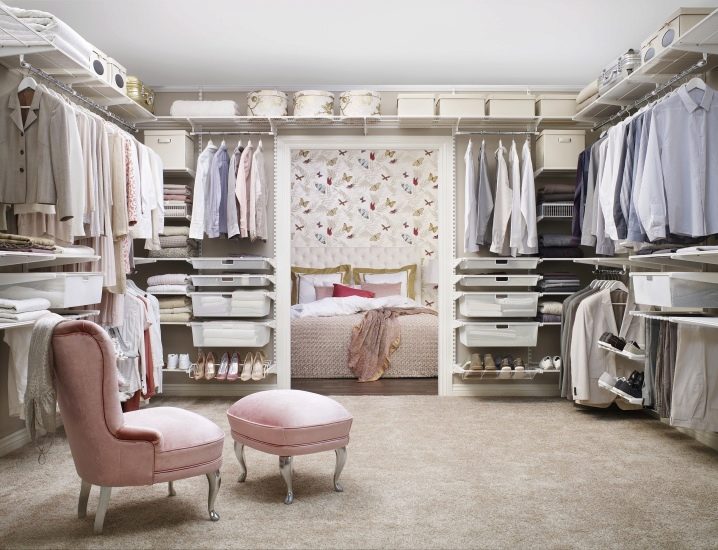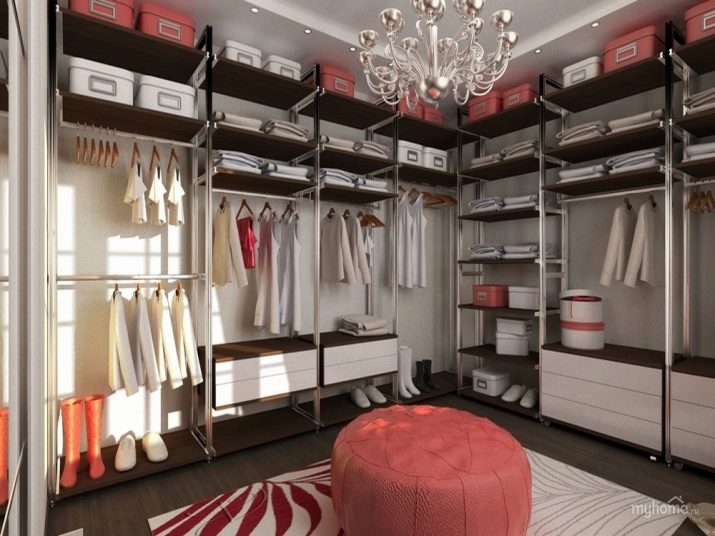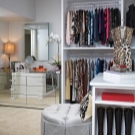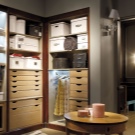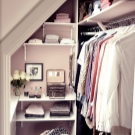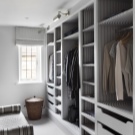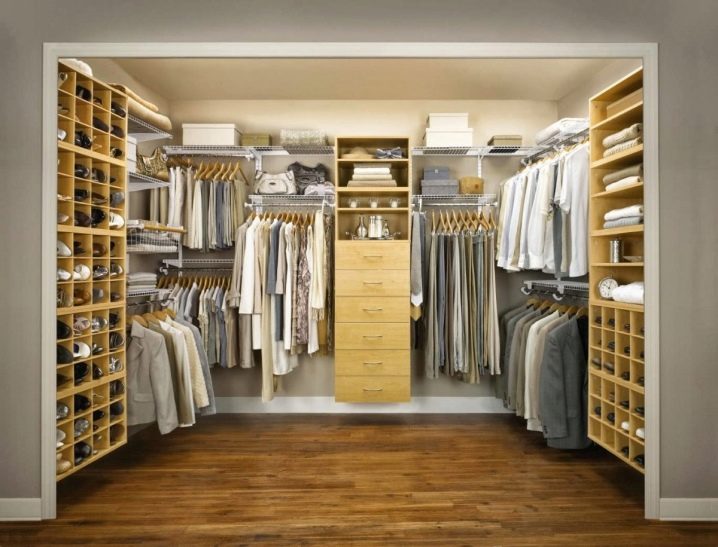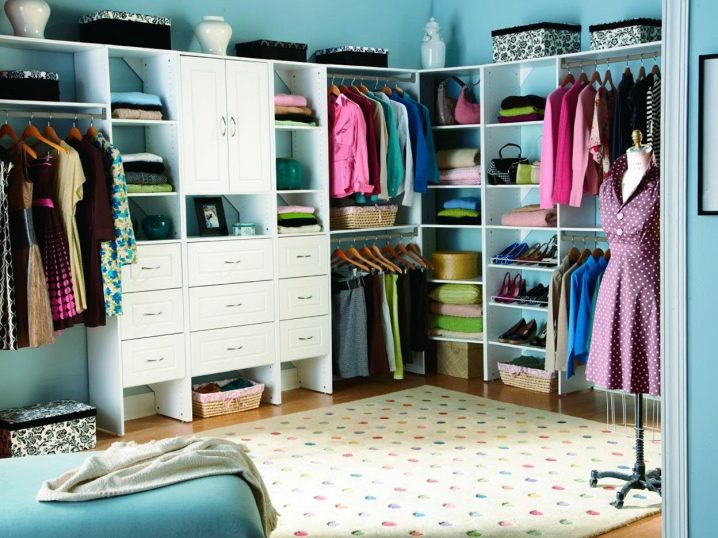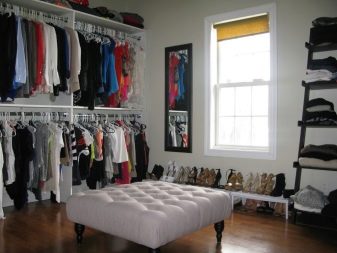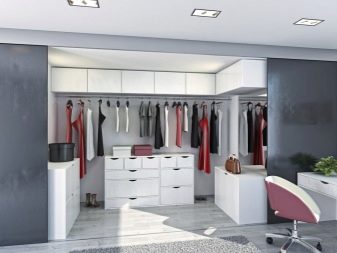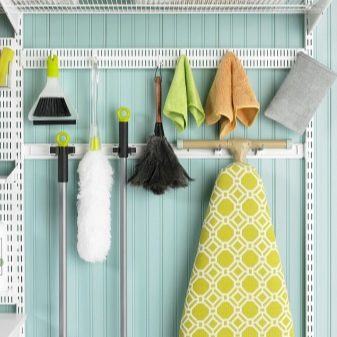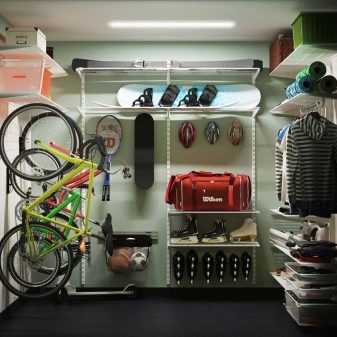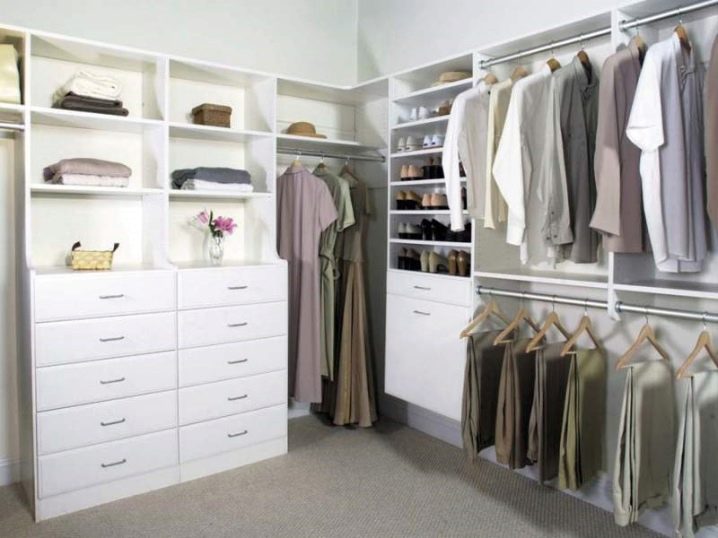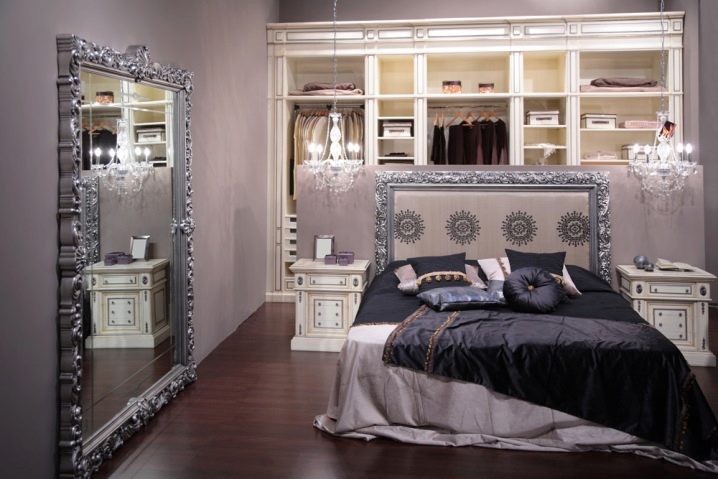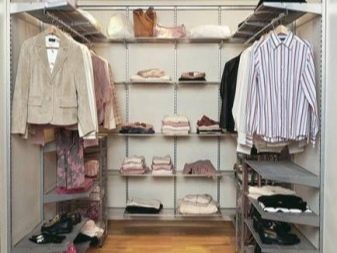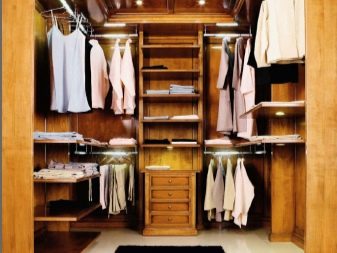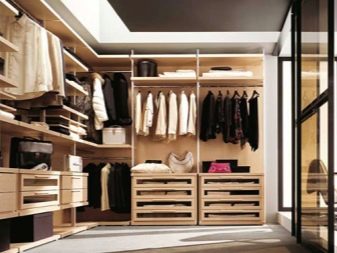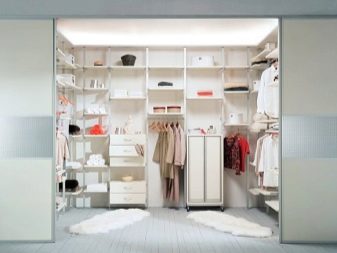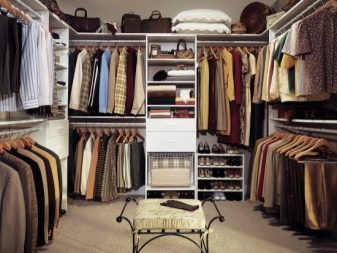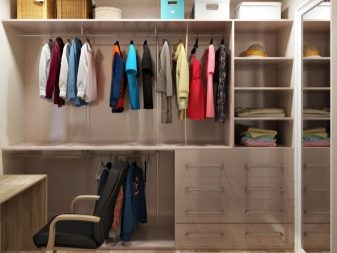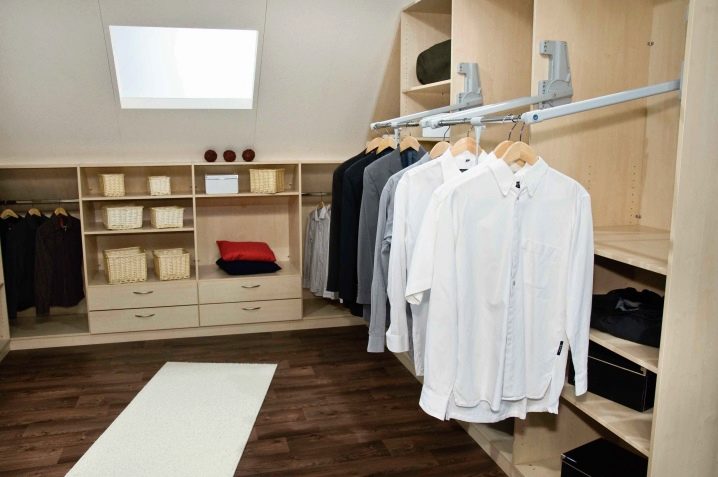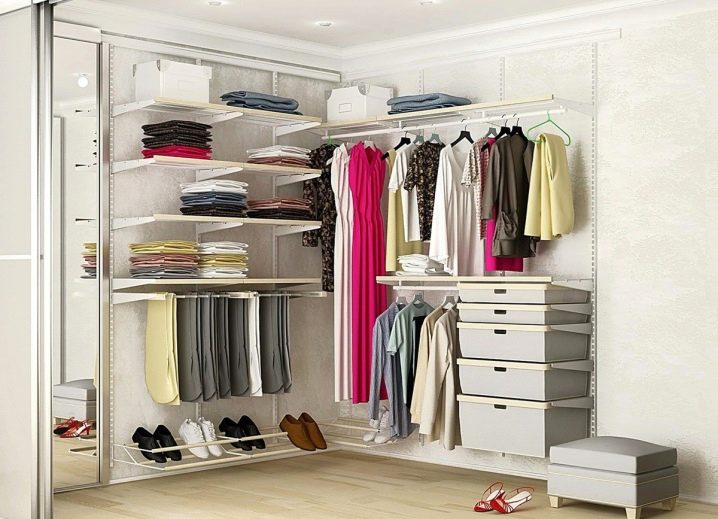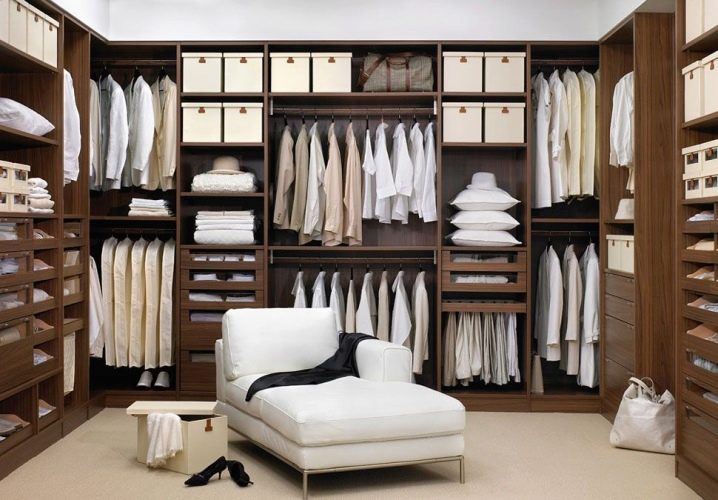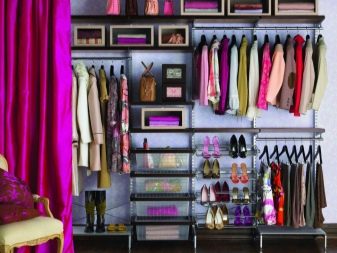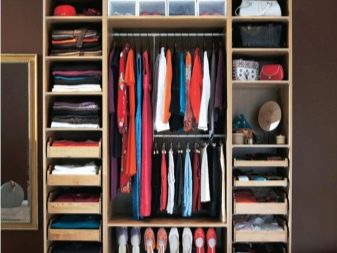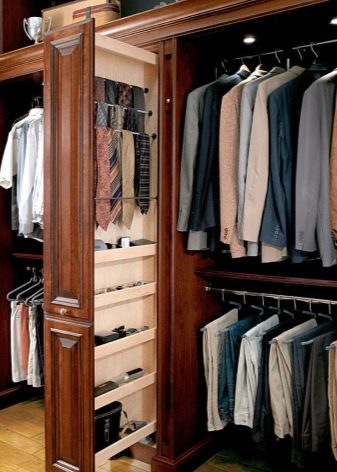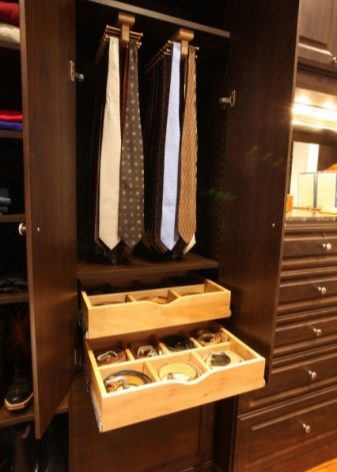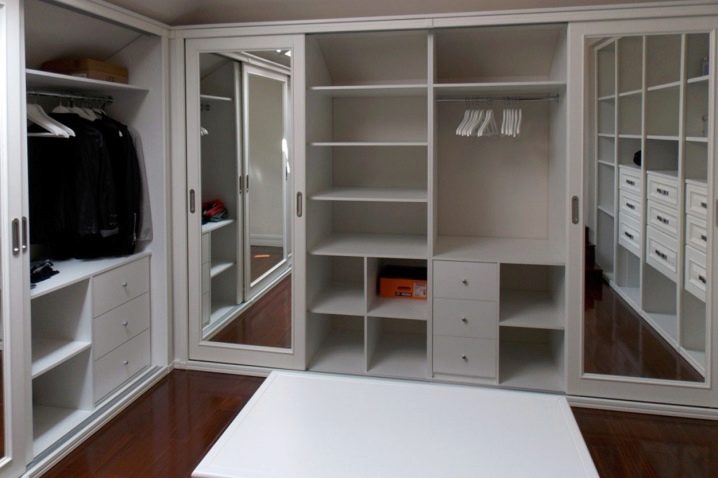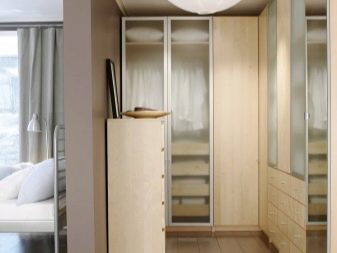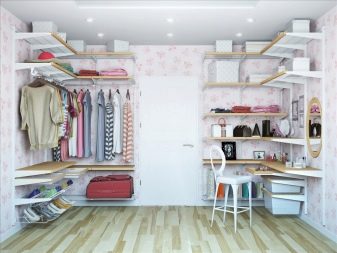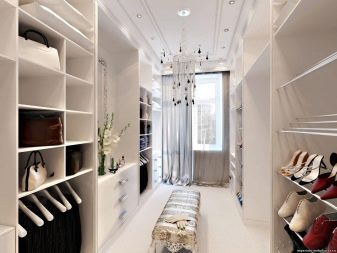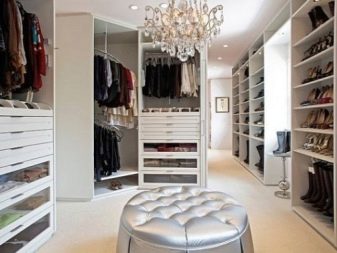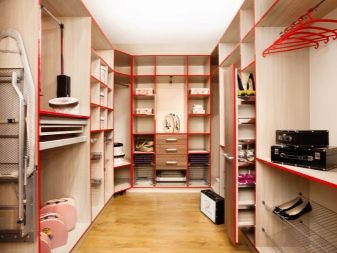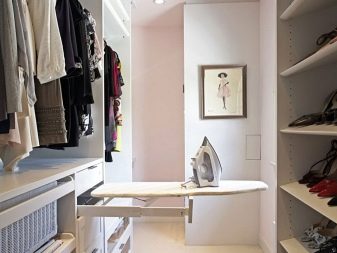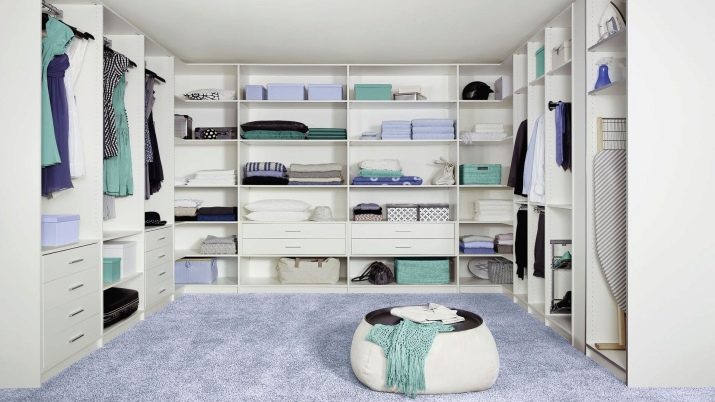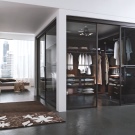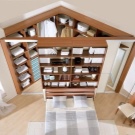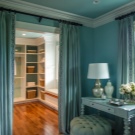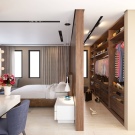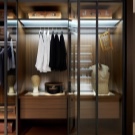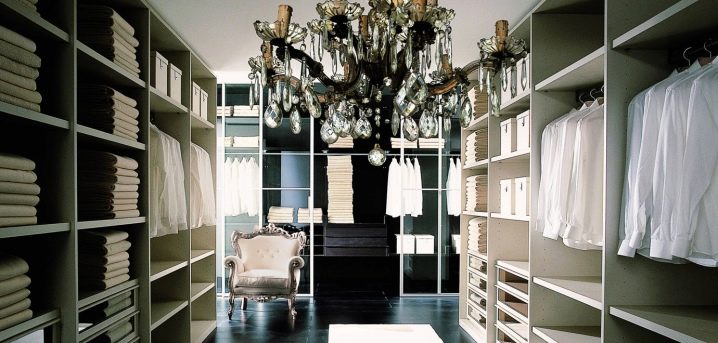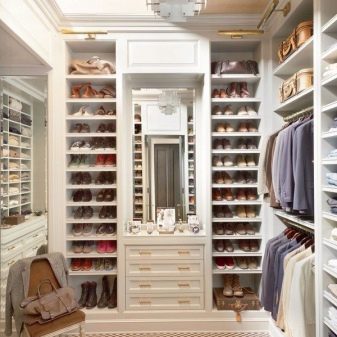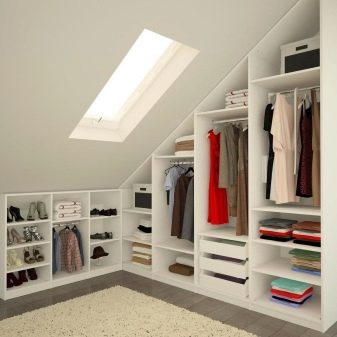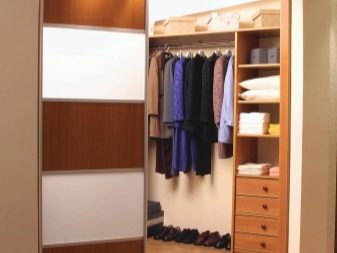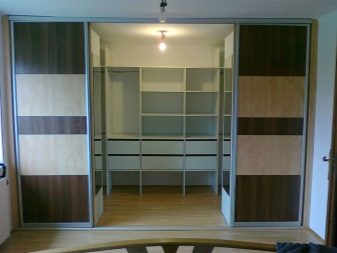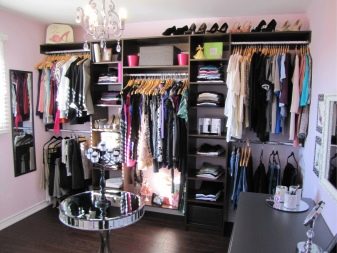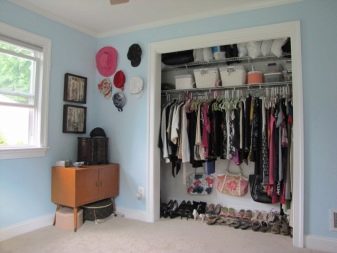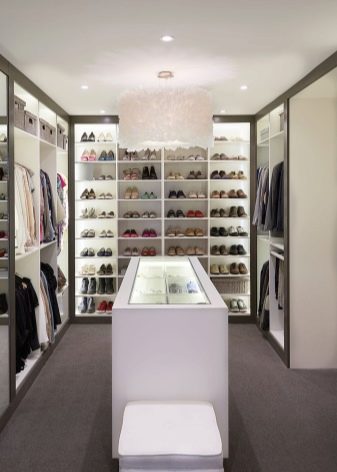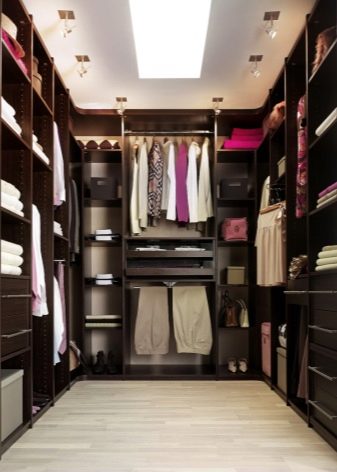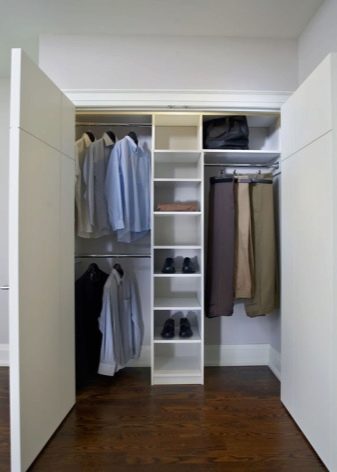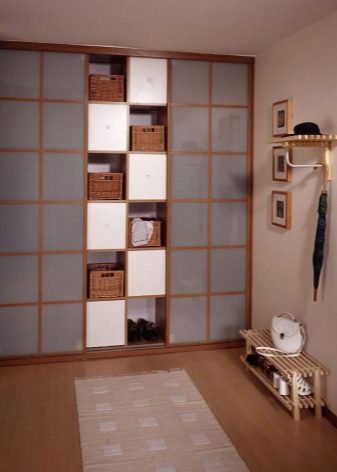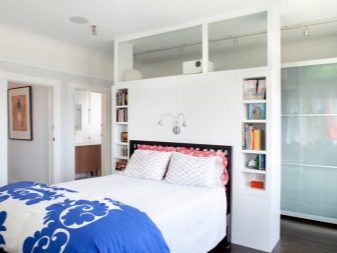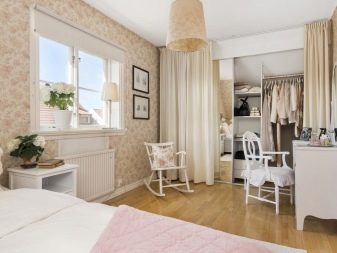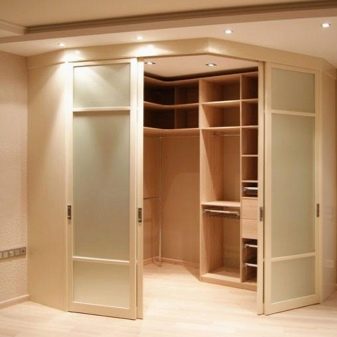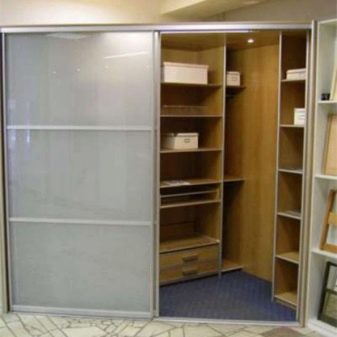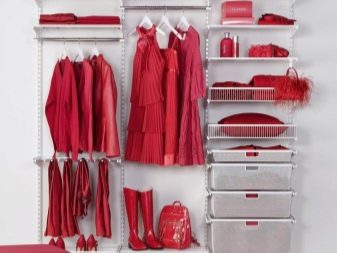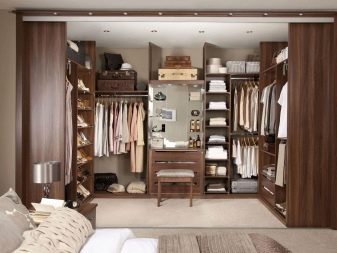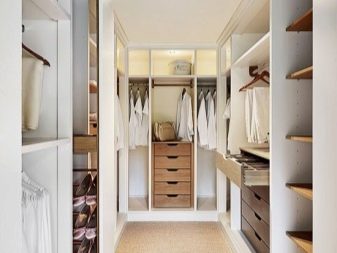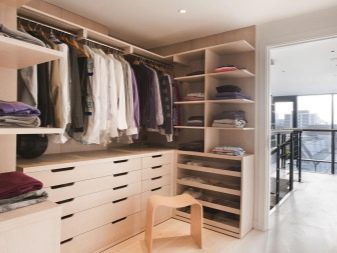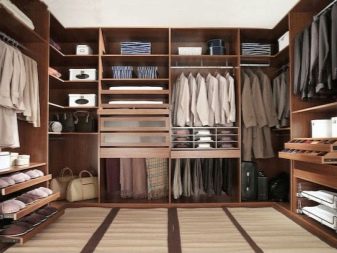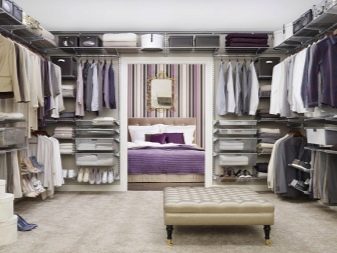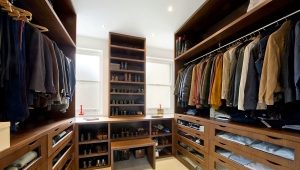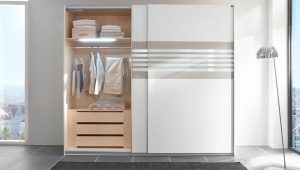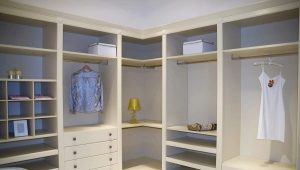Filling for cabinets and walk-in closets
In modern times, a dressing room is not a luxury item; increasingly, such a room is found in houses and even small apartments, for which they allocate space as a small niche in the hallway to a separate room. Choosing a dressing room is not an easy task, but it is much more important to make its content functional and accessible, which we will discuss in this article.
Filling the dressing room is a system of hanging shelves, drawers, rods, hangers and sliding structures that allow you to distribute things and create order in the house. In addition to clothing, household items can be stored in the dressing room, so filling the extra room should be thought out to the smallest detail. Now there are many designers and firms offering their services to create a plan for your dressing room, but this is easy to do by yourself, and the money saved can be spent on the purchase of shelves and hangers, drawers with high-quality mechanisms.
Features and benefits of a dressing room:
- The order in the house is a guarantee of your good mood and the appearance of a free minute for other classes.
- Filling the dressing room allows you to distribute things and provide them with proper storage, from which your dresses or trousers will not hesitate (as on a chair), and there will be a place for winter boots even in summer.
- A dressing room allows you to save a family budget - it is much more profitable to purchase filling for a dressing room once, rather than endlessly buying cabinets and dressers, which, moreover, clutter up the space in the house.
- You can store not only clothes and shoes in the dressing room, you can also hide there household equipment (for which you create an additional compartment in the room).
Special features
To create an accessible and functional model of a dressing room, it is worth dividing it into some areas for storing certain items of clothing.
- Open shelves can become the basis of your wardrobe, as they are convenient for storage and allow you to see clothes. The shelves are universal in that you can hang them both at the top - in an area unattainable for you without a chair, for example, at the eye level and even at the bottom. So you can safely place suitcases, boxes with articles of clothing or shoes for another season or something not quite necessary “here and now” on the upper shelves.
Shelves at eye level are an excellent way to put your things on them; In addition to clothing on the open shelves you can easily place bags or other accessories, shoes. Choose shelves from 40 cm in width, but they should not be made too wide either.
- Drawers mainly located in the lower part of the filling dressing room. They may differ in their breadth and depth, used for storing underwear, hosiery, ties and bow ties, jewelry or belts (such boxes have a backing made of soft material).
- Rods are used for storing things on hangers, and in filling the dressing room of the best to choose from two types: higher and standard. Standard bars usually have a height of 100 cm and are suitable for storing skirts, pants, sweaters, and long counterparts for coats, dresses and outerwear, their height is usually from 160 cm to two meters.
A kind of rod is a pantograph - this is the same rod, only with the possibility of adjusting its height, or descending.
A dressing room may have a small compartment of trouser hangers: they are retractable and compact (about 60 cm in length).
- Baskets and boxes in the dressing room are used to store laundry, for example.They can be placed on the sliding structures in the lower part of the room to save money - just put the baskets or boxes on the shelves themselves, having previously coordinated their sizes.
- Shoe covers, or modules for storing shoes. It is very important to store shoes correctly, and special open shelves, made with a slight slope, closed galoshnitsy, modules with a place for the heel or made in the form of a pad will help you - they are comfortable to wear shoes.
- Separate hangers for belts, ties and other accessories are equipped with special openings; you can store such small things in boxes, on the doors of the room.
- A mirror in the dressing room is a particularly important thing if the dimensions of the room allow to place this interior item inside. An alternative to the mirror in the dressing room will be its placement on the doors.
- Lighting is one of the important components of its filling, especially if the room is spacious and roomy. Proper lighting will help not only quickly navigate the storage room, but also bring yourself "in order" and look neat and well-groomed.
- In the spacious walk-in closets, they usually place a comfortable chair or a small padded stool - this gives the room functionality (try on shoes or put on clothes) and a special charm.
In order to relieve the apartment a little, compartments for household equipment — ironing boards, irons, mops and vacuum cleaners — are often made in the dressing rooms. By the way, the ironing board can be fixed on the wall in such a way that it can be used easily by simply “unfastening” it from the wall and then fixing it again with one hand movement.
Recommendations
For those who are faced with the creation and filling of the dressing room for the first time, it can sometimes seem difficult to sensibly and advantageously zone its space. Expert advice will help in solving this problem.
In spacious apartments and houses, a separate room is allocated for a dressing room: it is usually the smallest and the darkest, the one that would be used as a closet. In small apartments for a dressing room give a niche: in the hallway or bedroom, which would be the most functional and convenient to use guests.
If the dressing room is spacious or located in the dark part of the room, you should take care of its lighting. For this kind of rooms choose spot lighting, which allows you to arrange a few lighting fixtures, or ordinary chandeliers: take care of your safety when trying on clothes, so that when waving your hand do not touch the subject of lighting.
Creating a dressing room with your own hands is simple: in a niche it is worthwhile to organize hinged shelves and a few clothes rods, which will not require special skills of a builder. There are also ready-made wardrobe systems that are sold in furniture stores and can significantly save time on thinking about filling your dressing room.
Let's talk about the size of the fillers: the height of an ordinary clothes bar does not exceed a meter, for especially high or long structures, it is worthwhile to provide a support from below; the depth of open shelves is traditionally less than a meter, the width is not less than 40 cm and not more than 90. Drawers should not be made more than 90 cm in width, otherwise the design may collapse due to the severity of things.
To feel comfortable in the dressing room, make spacious aisles between the shelves with a width of 60 cm; if there are retractable structures, add another half meter to this width.
Little wardrobe
Creating such an important element of your interior is simple, highlighting only a small part of the room: a bedroom or a corridor.
Niche
Some apartment layouts have a small niche (usually in the corridor),which will be the perfect place for your “vault”. It can be fenced off thanks to the doors (folding, sliding), curtains and even a screen.
Bedroom
Give your future dressing room one of the walls (on which there is no window, of course). You can choose a place directly behind the bed or at the opposite, side wall, it is important that this part can be easily separated off with the same doors or curtains.
Corners
You can place a wardrobe in the very non-functional space of an apartment or house - in its corners or sloping spaces.
And finally:
- The interior of the dressing room is spacious and even small should be functional: the drawers should be easy to open, and the hangers should be easy to remove the thing from there.
- Speaking of drawers, eliminate, if possible, the presence of handles on them for opening and replace them with small grooves in the structure itself: this will protect against injury during careless or sudden movement.
- To make the choice of wardrobe items as convenient as possible, identify separate places for storing trousers, outerwear, accessories and shoes. Placing garments in different parts of the dressing room will save time on searching andchoosing clothes, and hanging clothes of the same type by color is a sure way to save even more time.
